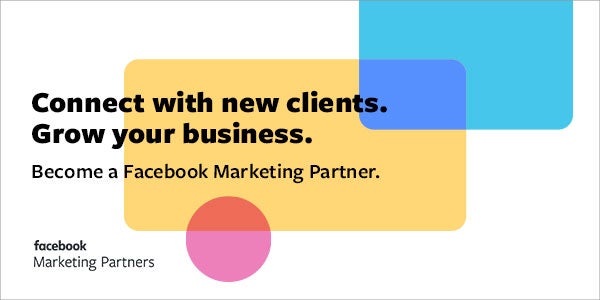This article is sponsored by Facebook.
More than 2.7 billion people now use Facebook and its family of platforms – including Instagram, Messenger and WhatsApp – every month.[1]
In this age of platform-based interactions, Facebook ad campaigns and customer service features are no longer a “nice-to-have,” they have become a necessary touchpoint to build customer relationships and drive conversions. But capitalizing on Facebook’s scale, while meeting consumer expectations for personalization and ad relevance, introduces unique challenges for marketers. Nearly 74% of marketing leaders report they struggle to scale their personalization efforts, according to Gartner’s 2018 State of Personalization Report.[2]
“The scale of Facebook can present a really powerful opportunity,” said Artur Souza, Director, Solutions Engineer at Facebook. “There’s so much that can be done with so many different people on the platform – each with different needs and expectations. This can start to feel like a double-edged sword for advertisers, so our goal is to help them navigate this complexity with our solutions and partners.”
Facebook’s solutions, such as the Marketing API – paired with strategic partners – introduce new process efficiencies that make comprehensive, personalized campaigns more achievable at scale.
Here are three ways brands can use Facebook’s customizable tools and resources to engage more of their audience, more effectively.
- Start with the 1-to-1 message formats your audience already uses. The speed of texting meets consumer expectations for instant responses in ways that other channels can’t replicate. According to a Drift and SurveyMonkey survey, 42% of people expect a response within five seconds of sending a message.[3]
However, delivering a live chat solution to customers at scale can require significant resource and budget allocations – and still might fail to live up to their high expectations.
By integrating easy-to-setup automated lead generation features into the Messenger chat experience, brands can move seamlessly between automated and live chat messaging to qualify and nurture leads while creating cost-effective, efficient Q&A sessions. Newly generated leads can be synced directly with CRM systems, so sales teams can take immediate action.
“People want to be able to react to ads and product offerings in real time,” Souza said. “That’s how it works in the store, and more and more that is how they expect it to work online too. Automated lead generation takes some of the pressure off your customer service team by combining the benefits of real agents and machine learning.”
- Leverage the Marketing API to drive workflow efficiencies into every campaign. Expectations for personalized, relevant experiences also extend to the ad experiences consumers encounter across Facebook’s platforms.
That’s where Facebook APIs can help introduce valuable automation and efficiency to ad delivery on the platform – allowing advertisers to cut through the noise with ads that speak to individual customer needs.
“When you think about what personalization at scale looks like, there are people at all stages of the conversion funnel,” Souza said. “As a result, there are a lot of things to figure out – for instance what you are willing to pay for a bid for one individual versus another and which types of creative will be more impactful for each audience segment.”
Facebook’s collection of APIs act as the building blocks for brands to infuse personalization and customization across four areas of their campaigns:
- Provide a foundation for automated ad management with creative, bidding and tagging strategies that simplify the operation of ad campaigns.
- Manage creative versioning and build rules to optimize when and where to show ads for each user.
- Identify audiences to target and retarget by integrating first-party CRM data and layering it with Facebook’s advanced targeting capabilities.
- Adjust campaigns in real-time by setting up custom rules to stop and start ads, adjust bids and reallocate spend as needed.
Together these customizable tools offer added resource efficiency and advanced lead generation capabilities that simplify the campaign process – while simultaneously expanding its potential impact.
- Partner with experienced specialists who fill in the gaps. Consumer expectations – and the digital tools that enable brands to meet those expectations – can move at lightning speed.
Facebook helps its advertisers navigate this challenge by providing access to a wide range of specialists through the Facebook Marketing Partner Program. Facebook Marketing Partners (FMPs) provide essential marketing capabilities from campaign management to cross-channel measurement to creative production and beyond. Each Facebook-certified partner is equipped to do the legwork for organizations who don’t have the capacity or technological knowledge to launch and manage their own solutions on Facebook.
And for Facebook partners, the Partner Directory and badge delivers visibility and credibility to potential clients about their specific capabilities and solution strengths.
Facebook Marketing Partners – who specialize in campaign management, creative, messaging, measurement, commerce and other technical requests – can deliver tailored solutions to businesses of any size.
These accessible resources empower brands to focus on their business goals, while Facebook partners deliver behind-the-scenes results that drive the brand forward.
[1] Facebook data, June 2019.
[2] “2018 State of Personalization Report” by Gartner, March 2019.
[3] “2019 State of Conversational Marketing” by Drift, July 2019.
















